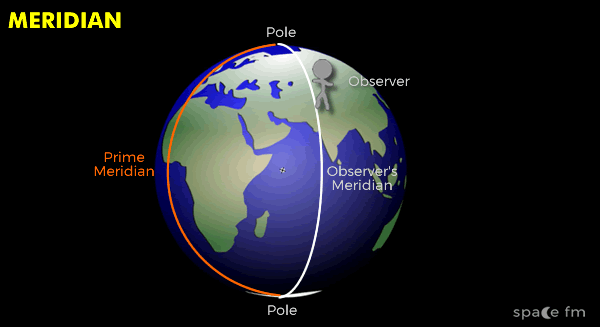Celestial Calculations
6.8 - Understand the use of the equatorial coordinate system (right ascension and declination)6.9 - Understand the use of the horizon coordinate system (altitude and azimuth)
6.10 - Understand how the observer’s latitude can be used to link the equatorial and horizon coordinates of an object for the observer’s meridian
6.12 - Be able to use information on equatorial and horizon coordinates to determine:
a) the best time to observe a particular celestial object
b) the best object(s) to observe at a particular time
6.11 - Understand how the observer’s meridian defines local sidereal time and an object’s hour angle
6.17 - Be able to use information about rising and setting times of stars to predict their approximate position in the sky
Right are you in for a treat... a bonanza of questions awaits you. Don't click on 'Check Answer' until you've tried to figure it out now ya' hear.
Question 1
The star Betelgeuse rises from London at 20.03 on the 23rd November. What time will it rise on 30 November? Hint: Stars rise approx 4 minutes earlier each day.
Check Answer23/11 to 30/11 = 7 days
7 x 4 = 28
20.03 - 00.28 = 19.35 so Betelgeuse rises from London at 19.35 on 30 November.
Question 2
Betelgeuse has a Right Ascension of 05h 55m. It culminates at 02.03 on 6th January. Rigel culminates at 01.23 on 6th January. What is Rigel’s right ascension?
Check Answer01.23 minus 02.03 = Difference of -40 minutes
05.55 – 40 minutes = 05.15m = Right Ascension of Rigel
Question 3
On the same date Sirius has a Right Ascension of 06h 45m. What time does it culminate?
Check Answer06.45 – 05.55 = Difference of +50
minutes
02.03 + 50 minutes = 02.53
Question 4
The star Betelgeuse rises from London at 20.03 on the 23rd November.
A person 3°
west sees the star culminate at what time?
1° West = difference of +4 minutes
3° = 12 minutes.
Star culminates at 20.03 + 0.12 = 20.15
Question 5
Assume Polaris has a declination of 90° North. At what angle in the
sky would it be visible from these locations?
a) Beijing 40°N
b) Bombay 19°N
c) Wellington 41°S
a) 40°
b) 19°
c) It wouldn’t be visible. It would be 41° below the horizon
when culminating.
Question 6
A star seen from London (51°) culminates at 30° above the horizon. What is the star’s declination?
Check Answer90 – 51 = 39
30-39= 9° N
Question 7
A star culminates at 50°. It has a declination of +20°. What is the latitude from where it is observed?
Check AnswerThe altitude is equal to the declination + (90°-latitude) the latitude is the declination - altitude + 90°.
20°-50°+90° = +60°
Question 8
A person on the Tropic of Capricorn measures the angle of the Sun at midday
on different days. What angle is it at on these dates?
a) March 21st
b) June 21st
c) September 21st
d) December 21st
a) & c) 66.5°
b) 47°
d) 90°
Question 9
It is midday on December 21st. What angle is the Sun in the sky at
these locations?
a) The Tropic of Cancer (23.5° North)
b) Sydney (34° South)
c) South Pole (90° South)
d) London (51° North)
Clue: The Sun has a declination of -23.5° (South) above the Equator on this date. It is at the zenith from the Tropic of Capricorn.
a) 90 – 23.5 - 23.5 = 43°
b) 90 – (34 + 23.5) = 79.5°
c) 90 – (90 + 23.5) = 23.5°
d) 90 - (51 -23.5) = 15.5°
Question 10
Two observers, Dan and Boski observe the star Capella at different places.
Dan sees Capella cross the meridian at 19.00. Boski is 3° east of Dan.
a) What time does Boski see Capella cross the meridian?
b) A year later the same happens only now, Boski sees Capella 10 minutes
later than Dan. How far east or west has Boski gone?
a) 1° = 4 minutes difference. 3°
= 12 minutes. East means the number is negative and so sees it sooner.
19.00 minus 12 minutes = 18.48
b) 4 minutes difference = 1°. 10 minutes = 2.5° difference. Seeing
the star later means he is now west so he is 2.5° west of Dan.
Did you know?
Technically any point on Earth is on a meridian between north and south poles.
Links
RMG Meridian astronomy

 | © All Rights Reserved |
| © All Rights Reserved |